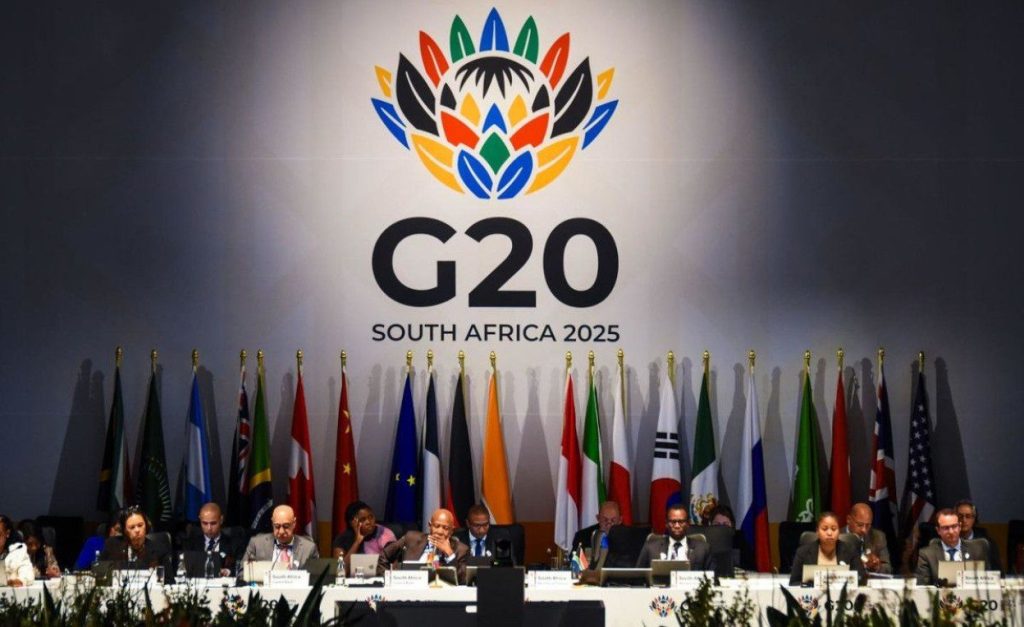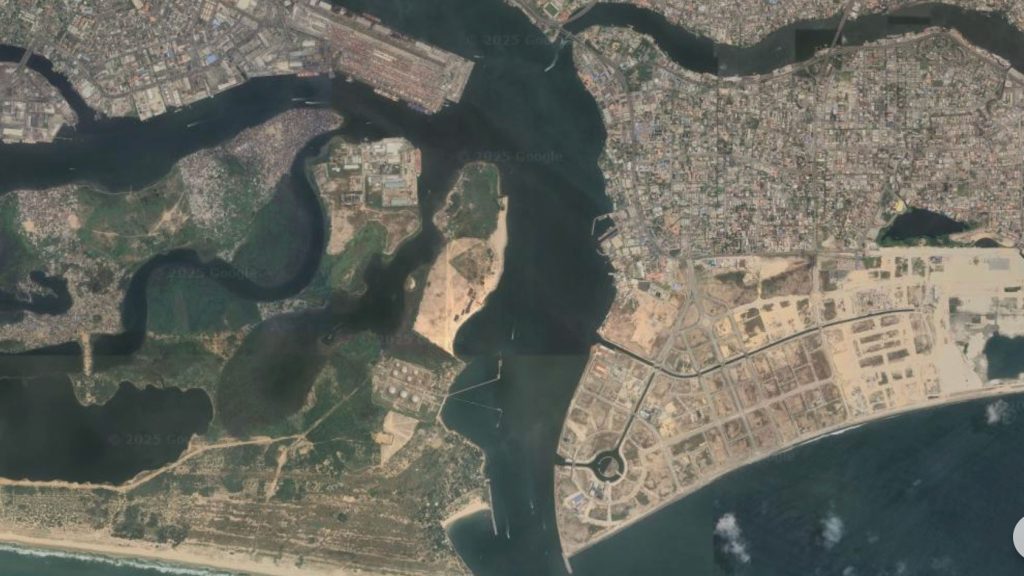After years of negotiations, delegates at the International Maritime Organisation’s (IMO’s) Marine and Environmental Protection Committee last week agreed on how it would introduce a carbon price and a GHG fuel standard for the shipping sector, to achieve the body’s net zero by 2050 target. This makes it the first global sector specific price on carbon.
At the closing meeting on Friday, notwithstanding objections from petro-states, and a high number of abstentions, countries agreed to a levy linked to a goal-based marine fuel standard designed to gradually lower the GHG intensity of marine fuels.
The measures will be mandatory for all large ocean-going ships with a tonnage of 5000t or more, a fleet which is responsible for more than 85% of emissions from international shipping. According to the World Bank, if the shipping sector were a country, it would be one of the sixth largest emitters in the world, ranking between Japan and Germany, and contributing roughly 3% of global emissions.
While the imposition of measures in the sector is welcome, it’s full impact on African states and the measures in place to ameliorate these are uncertain. A previous assessment by the Africa Policy Research Institute, the African Future Policies Hub and the LSE looking at a levy of US$100/tonne, found that it could reduce the supply of maritime shipping services among African countries by up to 7%. It also found it would likely increase shipping costs and commodity prices, reduce levels of trade, increase food prices and food insecurity, and decrease household incomes, with impacts disproportionately impacting African households. To partially mitigate these , the report recommended that accrued funds should be channelled to out-of-sector mitigation and resilience activities.
While the compromise reached at the MEPC does address some of these concerns, for example it supports the channelling of funds to address food insecurity arising from the price mechanism, funds are still kept primarily within the maritime sector, and these costs will be in addition to other costs imposed by other regional maritime pricing mechanisms.
Who Supported it and Why
The deal was passed with a 63-16 vote with 25 abstentions, with a relatively low turnout rate from African countries. Some emerging economies, such as China (the world’s largest ship owning country), and Brazil had opposed the levy, arguing that it would unfairly penalise trade reliant emerging economies, but they ultimately supported the compromise that introduced flexibility mechanisms by allowing for the trade of Surplus Units.
A handful of petro-states opposed the measure, including Saudi Arabia, Qatar, Venezuela, the United Arab Emirates, and Russia.
A group of Pacific, Caribbean, and African island states known as the 6PAC+, abstained in rejecting what they believed was an inadequate compromise. In a statement following the vote, Minister Antony Derjacques of the Seychelles said: “The developing countries with the greatest need came here and offered a solution. How can the other major economies ask us to take a weak deal home to our people, who are suffering as a result of the climate crisis? And how can they take it back to their constituents?”
The group had instead supported a flat fee for every tonne emitted which, it believed, would have generated more revenue, reportedly some US$60 billion a year. The compromise text coming out of the MEPC is expected to generate only a fraction of that, some $10 billion annually, according to the Guardian. The article also quotes figures by consultancy, Umas, which estimates that the levy will only bring emissions down 8% by 2030, far from the 20% that the IMO Strategy targets.
The 6PAC+ also wanted to distribute collected revenues widely and outside of the shipping sector, for example, to fund adaptation and response measures in highly vulnerable countries. While the agreement that was reached does make provision for addressing proportionately negative impacts caused by the measure, it does not extend to wider climate purposes. In any event much of the revenue is likely to be used for decarbonisation in the shipping sector with questions raised about whether it will be enough even for this purpose.
Other African countries diverged in their response. Egypt, Ghana, Liberia, Madagascar, and Uganda also abstained from the vote. Liberia’s abstention is unsurprising. It has one of the largest open shipping registers in the world and it had previously supported proposals to have a levy at the lowest band of $18.75. It is also particularly vulnerable to the impacts that a levy might have, given the volume of staple food it imports, and its high exposure to pricing shocks. On the other hand, as chair of the MEPC, Liberia was hard pushed to support the room in reaching the compromise or “bridging” proposal that countries had worked hard to agree.
South Africa, Kenya, Namibia and Senegal were among the 63 in favour of the vote. While the reasons for their support were not made public (South Africa previously supported a proposal that had no carbon levy), all of them have just transition and green energy ambitions to varying degrees, and the proposal offers incentives that they could leverage.
Nigeria elected to not align with other petro-states, notwithstanding its reliance on LNG (a fuel that will be progressively penalised by the levy), however it did not appear at the final vote.
The US left the talks threatening to impose “reciprocal measures” to offset the impact of the measures on US ships. The US was, however, never expected to play a meaningful role in the discussions and has a relatively small fleet compared to other bigger players. It would in any event be subject to the IMO rules in any port it docks where the host nation is a party to the IMO.
But the draft is not final and it will still need to be formally adopted in October this year. An issue that still needs to be addressed is how the pricing mechanism in the IMO will work alongside other measures such as the EU’s Emissions Trading Scheme which included Shipping within the scheme last year. Maria Ogbugo, a senior associate at the African Future Policies Hub, warned that “a key point of concern for African states in particular is the pile up of costs arising from having both the mid-term measures and multiple regional emissions schemes in force concurrently. This should be an important negotiation ahead of the adoption by the IMO of the measures in October 2025.”
How it works
The structuring of the pricing mechanism is complex and the outcome of a compromise, based on fuel intensity targets, a measurement focused on how “clean” the fuel used in a ship is, with the option of trading and incentive measures woven in.
Starting in 2028, ships that continue to use traditional fossil fuels will pay US$380/tonne of CO2 to achieve the minimum Base fuel intensity target, and $100/tonne of CO2 to achieve the tighter/more ambitious Direct Compliance Target.
Effectively ships will operate in three bands:
- ones that achieve a high level of compliance in the upper band, and which comply with both the Base and Direct targets. These generate Surplus Units, which can be banked for two years, or sold;
- Ones that operate between the upper (Direct) and lower (Base) targets. These ships needs to pay $100/tonne of CO2 to meet the Direct target.
- Ships that exceed the thresholds of both targets. These ships effectively will pay $380/tonne up until the Base target and then US$100/tonne of CO2 to meet the Direct target.
Ships will make this payment by purchasing Remedial Units from the newly established IMO Net-Zero Fund along the pricing set out above. If a ship exceeds its Base Target it can use Surplus Units banked from previous years or trade Surplus Units with other ships to achieve compliance.
Revenues from the purchase of units will accrue in a new Net Zero Fund, and be used to issue rewards for the uptake of zero or near zero technologies and energy. Contentiously, revenue in this fund will only be redistributed within the shipping sector. For example, to finance R&D and the deployment of net zero technologies; just transition measures for seafarers and other workers; supporting countries in implementing their shipping National Action Plans under the IMO to decarbonise; and to address any “disproportionately negative impacts on States” arising from the measure, for example food security.
Next steps
The draft is due to be formally adopted in October this year, before coming into force in 2027. The agreement which was adopted in principle will be formalised into an amendment to MAPROL in a new Chapter 5 for Annex VI.
Ahead of the vote Ogbugo said that the IMO Secretariat and stakeholders must work hard to increase African engagement, ensuring that the reasons behind the continent’s low attendance, and high abstention during the vote, at the last MEPC meeting are thoroughly addressed.





